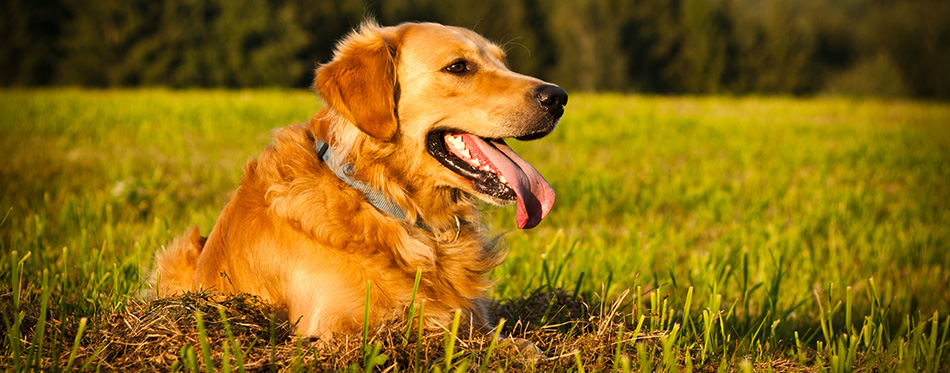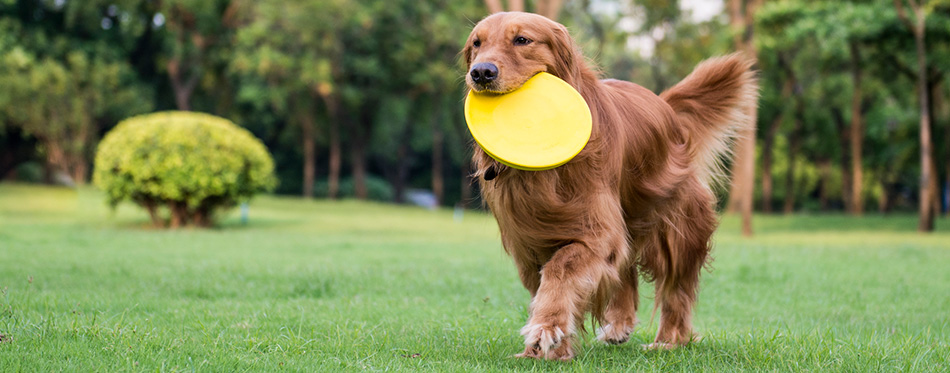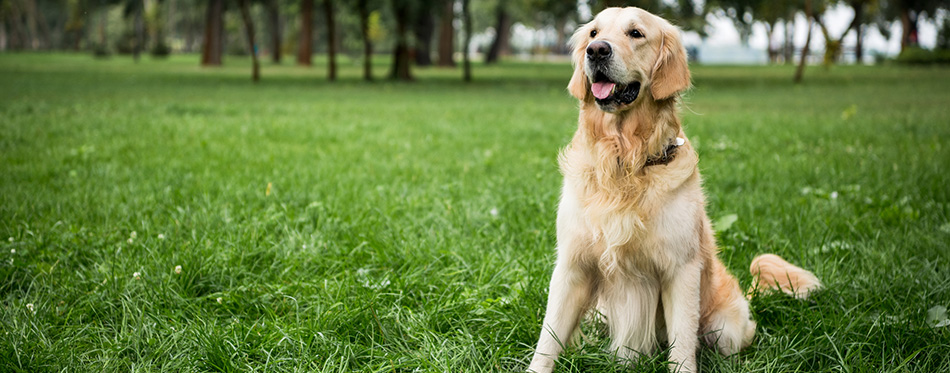No one can doubt the Golden Retriever’s popularity among dog lovers everywhere. It is a devoted, intelligent, and friendly dog with great beauty and an exuberant personality. When working, the Golden is as serious as any other dog. Off-duty, the Golden Retriever never fails to showcase its endearing love of life. Learn more about this adorable breed and see if it fits your definition of the best canine family companion.

History of the Golden Retriever
The modern Golden Retriever owes its existence to the pioneering efforts of Sir Dudley Marjoribanks, later called Lord Tweedmouth in the mid-19th century. Marjoribanks wanted a gundog that can surpass the hunting abilities of the setter and spaniel. During this time, there was an increasing number of hunters using hunting rifles. This meant that there are now more birds that are lost because setters and spaniels cannot retrieve them. Hence, Marjoribanks decided it was time to create a special breed of retrievers. At the same time, Lord Tweedmouth wanted a hunting dog that can be a great, loyal companion in the home.
The very first parents of the modern Golden Retriever were a Tweed water spaniel (Belle) and a wavy-coated yellow-colored retriever (Nous). The mating resulted in the birth of Cowslips, Primrose, and Crocus – known in the world as the very first Golden Retrievers. As these puppies grew, Lord Tweedmouth introduced other breeds into the gene pool in an effort to establish the characteristics that he desired for the Golden Retriever. Included in the gene pool is a sandy-colored Bloodhound, an Irish setter, two black wavy-coated retrievers, and a St. John’s water dog. Lord Tweedmouth used inbreeding practices to ensure that only the desired qualities of the breed will show throughout the bloodline.
The Kennel Club of the UK was the first to recognize the Golden Retriever in 1903. It took 14 years before the breed gained acceptance into the American Kennel Club as a breed. By 1938, the growing number of fanciers in the US organized the Golden Retriever Club of America.
As of 2018, the Golden Retriever is America’s third most popular breed after the Labrador Retriever and the German Shepherd.
Quick Facts about the Golden Retriever
If you want to get a Golden Retriever for your family, here are some quick facts that you should know about the breed.
- Large Dog that Requires Plenty of Love
The Golden Retriever is a large canine breed that can grow between 21.5 inches and 24 inches, with the male Golden taller by about 1.5 inches than the female. Males can reach a weight of 65 to 75 pounds, while females are lighter by 10 pounds. It is an exuberant dog that requires a lot of love from its owners. It is the canine version of Velcro, following its owners anywhere. This is not a sign of insecurity but proof of the dog’s strong bond with its human companions.
- High Energy Puppy
The first year of a Golden Retriever’s life is best characterized by its insatiable appetite for playing. Like all puppies, the young Golden is curious about how its newly-discovered world works. It does add more exuberance to how it discovers things than other breeds, though. Expect the Golden Retriever to jump and romp with vigor. And if you have toddlers in the home, you need to get ready as this puppy can be a handful.
Take a look at our review of Dog Agility Tunnels.
- Unmatched Friendliness
If there is one thing that can best describe a Golden Retriever in one word, then that would be “friendly”. This breed can approach almost anyone with a warm smile plastered on its golden face. It does not matter if that “someone” is a total stranger or a kid around the block. It can socialize with dog-friendly cats, too, making them the best buddies for life. Its passion for life is best shared with the children of its family, however. It does not serve as their nanny, but kids will always find a fun-loving playmate in the Golden Retriever.
- A Seasonal Heavy Shedder with a Predisposition for Doggy Odor
The Golden Retriever has a luxurious-looking long coat. Both the undercoat and the outer coat are dense; although the latter comes with an excellent water-repellent characteristic. It needs this to protect it when the dog goes out for a swim, which the breed loves to do. Unfortunately, its love of the water also predisposes it to a characteristic doggy odor. The thick coat is quite prone to heavy shedding during the fall and spring months. In summer and winter, the Golden Retriever will still shed, but only in moderate amounts. Because of the moderate to heavy shedding potential of the Golden Retriever, the breed is not recommended for people with asthma or pet dander allergies. Other breeds like the Poodle and Maltese are more suitable for such humans.
- An Excellent Swimmer and a Well-Respected Hunter
People look at the Golden Retriever as a playful dog. What they do not realize is that this is, first and foremost, a gundog or a hunter. Because of its water-repellent coat and excellent swimming abilities, hunters train Golden Retrievers to fetch downed waterfowl in the water. They can swim and grab ducks in the water. There is no danger of disemboweling the game as the dog has a very unique “soft mouth”. This means it will never mangle the prey in its mouth. While the Golden Retriever is proficient at retrieving downed waterfowl, it can also pick up upland game birds with ease. It is the perfect companion for hunters of pheasants, grouse, and woodcocks, among others.
- A Versatile Dog
When we talk about versatility in the dog world, very few breeds can match the Golden Retriever’s all-around nature. This is an intelligent breed, ranking fourth after the Border Collie, the Poodle, and the German Shepherd. This means that one can train the Golden Retriever any trick you can find in the book. While it is a hunter by nature, this does not stop the Golden Retriever from learning and performing other roles. Its friendliness is its greatest asset as a therapy and companion dog. Its work ethic makes it a great companion for search and rescue activities, bomb and contraband detection, and police work. Its gentle demeanor and trainability make the Golden Retriever the ears of the deaf and the eyes of the blind.

Things You Should Know
Caring for the Golden Retriever requires a basic understanding of its fundamental needs. In this section, we’ll learn more about some of the more important things that every Golden Retriever owner is expected to know.
Health
Goldens can live up to 13 years. Unfortunately, some of them don’t reach this age because of chronic health problems like bone and joint diseases, epilepsy, and heart disease. Cancer remains the leading cause of death among Golden Retrievers, accounting for about 60% of all causes of deaths. The most common cancer in the breed is hemangiosarcoma, although osteosarcoma and lymphosarcoma are not far behind.
Hip dysplasia and elbow dysplasia are very common, too. These joint conditions affect 20 percent of all Golden Retrievers. Other joint diseases include Panosteitis, patellar subluxation, cruciate ligament rupture, and osteochondritis. They are also prone to eye diseases like cataracts, glaucoma, retinal dysplasia, and progressive retinal atrophy. Golden Retrievers can also suffer from skin allergies. So, it would be wise to be picky about its food.
The breed can also suffer from depression secondary to separation anxiety. This breed can grow attached to its owner that it becomes sad and depressed if it’s left for too long.
Feeding
Because the breed is prone to skin allergies, pet parents should be very careful about the dog food that they give to the Golden Retriever. As much as possible, steer clear of dog kibbles as many of these contain a lot of fillers that can be the source of allergies for the dog. If one cannot do away with kibbles for economic reasons, then it is important to choose only high-quality products.
There are limited ingredient dog foods on the market that are suitable for canines with allergies. If the budget is not a concern, it is best to stick with wet dog food. If you are familiar with preparing high-quality raw diet for dogs, this is the best nutrition for a Golden Retriever.
Golden retrievers require the right amounts of calories commensurate to their activity level, age, and life stage. This is to help prevent obesity, a health problem that many Goldens are prone to developing. When giving treats, it should never comprise more than 10 percent of the dog’s calorie requirement for the day. For a wider selection of choices, check out our dog food for Golden Retrievers guide.
Care
All dogs can benefit from a routine visit to a veterinarian. It can receive mandatory vaccine shots to help protect it from certain diseases. Routine veterinary visits can also help identify health problems before they grow worse and uncontrollable. Given that many Golden Retrievers can suffer from a number of diseases, early and regular screening can help lessen the impact of these diseases on their lives.
While it is true that Golden Retrievers have a very friendly nature, they still need socialization as puppies. This increases the chance of them making friends with everyone as well as mitigate behavioral problems. Trips to the dog park or having dogs come visit your puppy is essential. Introducing different people can also help the pet get accustomed to the presence of other people in the house.
Training is a very important part of a Golden Retriever’s care. It is a working dog, after all. It requires both physical and mental stimulation so that it will not grow bored. This is an intelligent animal. Its natural willingness to please its people also helps make it very easy to train. A happy Golden Retriever is one that has something to do. Whether it is playing with you all day long or performing different tasks in the house, this breed will be more than happy to oblige.
Grooming
The coat deserves special care as it can get tangled and grow mats. Assisting with its shedding is ideal to help minimize having fur all over the house. Everyday brushing is a fundamental requirement of this dog. Use a slicker brush to help remove loose fur while distributing the natural oils on the dog’s skin. For more options, check out our detailed review of dog shedding brush.
Bathing is optional. However, once a month bathing is often enough to maintain the health and cleanliness of the canine’s coat. A haircut will be good once every 6 to 8 months. The nails also require clipping every month or whenever you hear the toenails starting to scratch the floor. The ears of the Golden Retriever also need inspection and cleaning every week.
Brushing the Golden Retriever’s teeth is a daily affair. If this is not possible, then once every 3 to 4 days is sufficient. In between brushings, you can always give the Golden a dental chew to help in the maintenance of its oral health.
Check out other dog grooming guides, such as dog shampoos, dog ear cleaners, dog grooming gloves, dog nail grinders and dog wipes.

Temperament
With its calm and sweet nature, it is impossible not to fall in love with the Golden Retriever. It exudes with confidence without being arrogant. It is amiable to all, making them poor guard dogs. They have a kind demeanor that can rub on their owners and their respective children. Their fascination for kids is best epitomized by their playful and fun-loving nature. They trust everyone and will give all their love and affection to those it considers its family.
The Golden Retriever is an active dog. While it can have a rambunctious nature, it knows how to be patient, especially when serving as a guide dog. They are very intelligent, too, and can focus on any given task to completion.
This is a breed that is perfect for individuals and families who want a versatile companion dog. It has an affectionate nature and a friendly disposition that makes it a wonder to have in any home.
It would not surprise us one bit if you are going to get a Golden Retriever, too. With all the positive attributes that this breed has, it is almost the perfect pet. Do keep in mind that it needs your care for it to thrive and live happily.
Source:
- Golden Retriever – AKC

